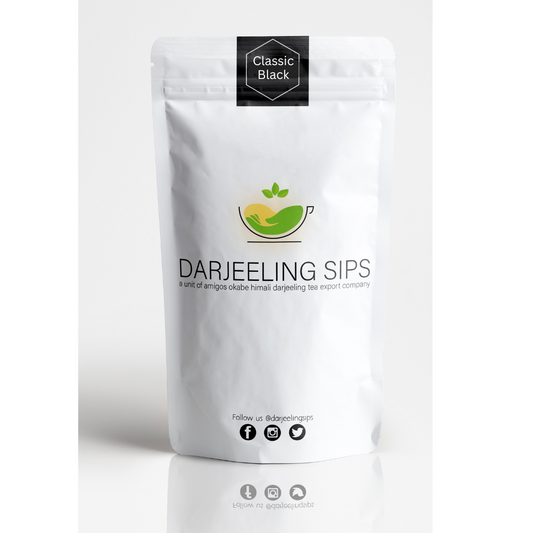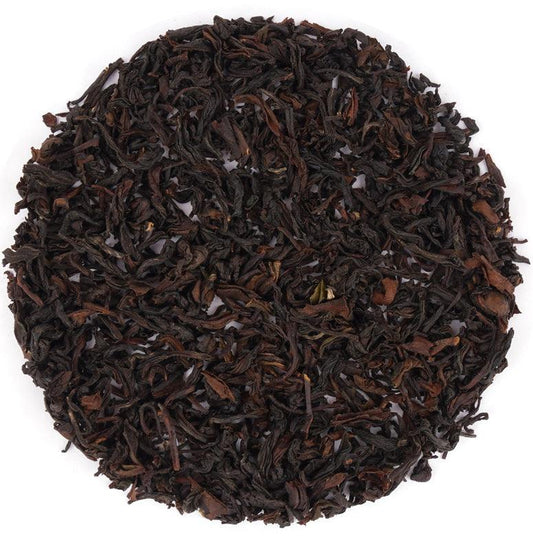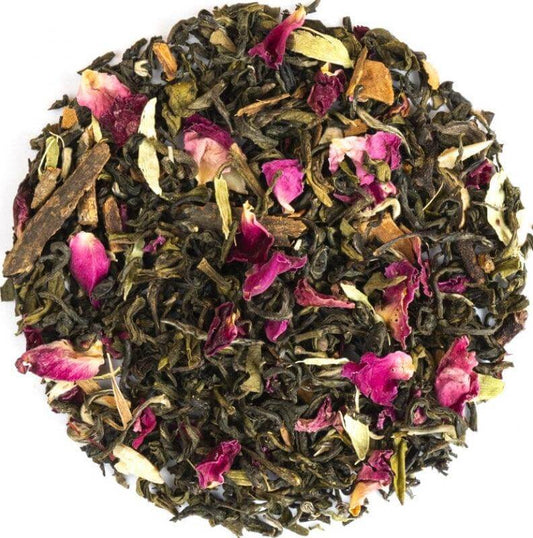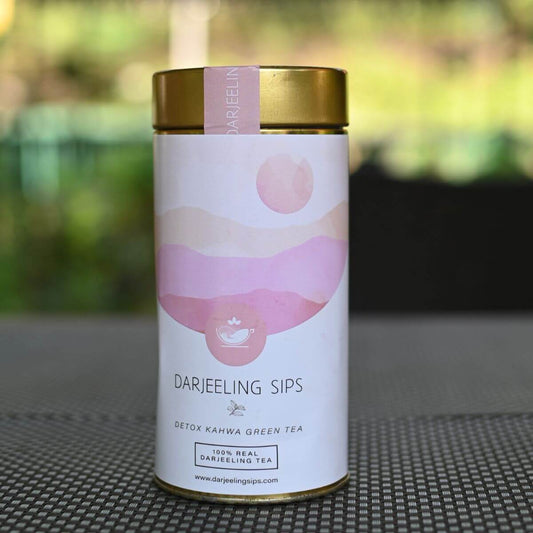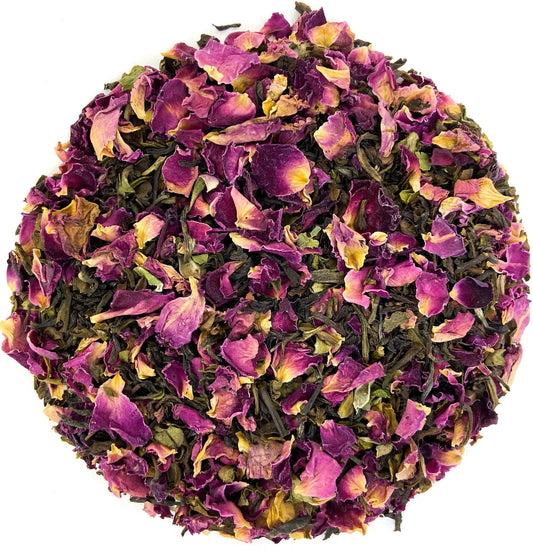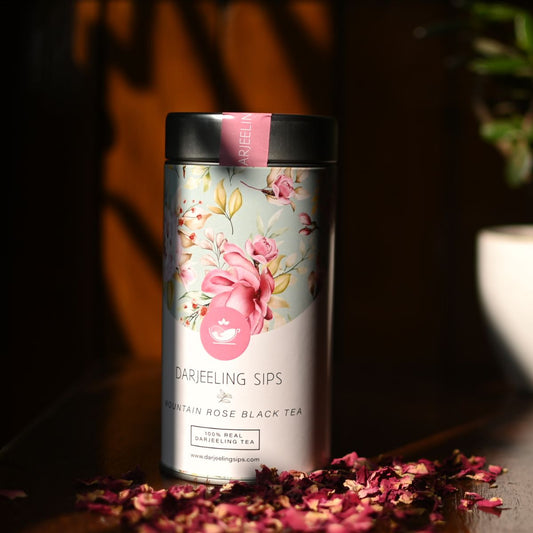The Taste of Darjeeling Tea
10 Dec 2022
What is the Taste of Darjeeling Tea?
Numerous jewels in shades of jade glisten atop the Queen of the Hills. So precious are Darjeeling’s treasures that stories about them stretch far and wide across the World. Connoisseurs can never get enough of it, Scientists are fascinated by its incredible pattern of growth, while the Locals nurture it like a little toddler.
Wondering what this wonderous jewel exactly is? You must have guessed it right, the preciousness adorning the Queen’s crown is indeed, the Darjeeling Tea.
Darjeeling Tea: A Journey of Flavors
The fruit of a serendipitous effort of Dr. Archibald Campbell et. al, Darjeeling Tea is known for it’s one-of-a kind astringent sweetness. More popularly known as the Muscatel note, this flavor of Darjeeling tea can be quite a paradox on the palette. So much so, is the intricacy and depth this beverage, that the Prestigious World Trade Organizationhas anointed it with the much-coveted Geographical Indicator or GI tag. What exactly is the importance of that, you ask?
A Geographical indication (GI) denotes that a certain commodity, Pure Darjeeling Tea, in this case, solely corresponds to a particular geographical location. The GI tag certifies that the product has specific qualities because of its geographical origin, and is produced by traditional methods.
Quite opposite to the erratic nature of Darjeeling’s weather, the tea bushes here witness some marvelously varying seasons also known as Flushes.
When Spring summons, and warm breezes blow, the tea bushes bloom into new leaves and buds. These tender leaves or the “First Flush” are most delicately subtle in flavor. Flowery notes predominate and your cup is delightfully fresh and light.
Magic of The Muscatel
The flavor of Darjeeling tea has been quite a rhetoric, but worth musing over. With the arrival of summer, the polyphenols in the tea leaves intensifies and grows robust. This is when the muscatel mystery of Darjeeling tea peaks. A name derived from the almost earthy acidity of muscat grapes, 'Muscatel' is the word that is aptly adopted to describe the taste of Darjeeling tea and rightly so! Darjeeling tea is an extravaganza of fruity and citrusy notes, especially during the Second Flush Season.
The muscatel flavor found in Darjeeling tea has been studied to be unique to the territory of this part of the hills. This is attributed to a special defense mechanism that the plant undergoes in the presence of a local insect known as the Green Fly (locally “khakra”). When the insect attacks, the tea bushes emit a chemical called phytoalexin which is responsible for the honey-like muscatel flavor in Darjeeling tea.
While every flush of the Darjeeling teas is loved for their own reasons, the summer flush reveling in notes of caramelized apricots, an inkling of spice and an undertone of honey is what truly sets Darjeeling tea apart.
With the onset of autumn, leaves turn to warm hues of orange and brown, and as people start seeking the warmth of soft pillows and bonfires, the autumn flush arrives. Resplendently rich and strong, this exclusive flush is for the lover of bold flavors. A full-bodied tea in shades of dark burgundy, the autumnal flush is abundant in notes of chocolate and whiskey.
Thus, ends the musical soiree of the muscatel notes of Darjeeling tea. The two leaves and a bud resign into a winter hibernation to bloom again as a delightful first flush in the cup of another spring afternoon.
-Simran Sharma
Numerous jewels in shades of jade glisten atop the Queen of the Hills. So precious are Darjeeling’s treasures that stories about them stretch far and wide across the World. Connoisseurs can never get enough of it, Scientists are fascinated by its incredible pattern of growth, while the Locals nurture it like a little toddler.
Wondering what this wonderous jewel exactly is? You must have guessed it right, the preciousness adorning the Queen’s crown is indeed, the Darjeeling Tea.
Darjeeling Tea: A Journey of Flavors
The fruit of a serendipitous effort of Dr. Archibald Campbell et. al, Darjeeling Tea is known for it’s one-of-a kind astringent sweetness. More popularly known as the Muscatel note, this flavor of Darjeeling tea can be quite a paradox on the palette. So much so, is the intricacy and depth this beverage, that the Prestigious World Trade Organizationhas anointed it with the much-coveted Geographical Indicator or GI tag. What exactly is the importance of that, you ask?
A Geographical indication (GI) denotes that a certain commodity, Pure Darjeeling Tea, in this case, solely corresponds to a particular geographical location. The GI tag certifies that the product has specific qualities because of its geographical origin, and is produced by traditional methods.
Quite opposite to the erratic nature of Darjeeling’s weather, the tea bushes here witness some marvelously varying seasons also known as Flushes.
When Spring summons, and warm breezes blow, the tea bushes bloom into new leaves and buds. These tender leaves or the “First Flush” are most delicately subtle in flavor. Flowery notes predominate and your cup is delightfully fresh and light.
Magic of The Muscatel
The flavor of Darjeeling tea has been quite a rhetoric, but worth musing over. With the arrival of summer, the polyphenols in the tea leaves intensifies and grows robust. This is when the muscatel mystery of Darjeeling tea peaks. A name derived from the almost earthy acidity of muscat grapes, 'Muscatel' is the word that is aptly adopted to describe the taste of Darjeeling tea and rightly so! Darjeeling tea is an extravaganza of fruity and citrusy notes, especially during the Second Flush Season.
The muscatel flavor found in Darjeeling tea has been studied to be unique to the territory of this part of the hills. This is attributed to a special defense mechanism that the plant undergoes in the presence of a local insect known as the Green Fly (locally “khakra”). When the insect attacks, the tea bushes emit a chemical called phytoalexin which is responsible for the honey-like muscatel flavor in Darjeeling tea.
While every flush of the Darjeeling teas is loved for their own reasons, the summer flush reveling in notes of caramelized apricots, an inkling of spice and an undertone of honey is what truly sets Darjeeling tea apart.
With the onset of autumn, leaves turn to warm hues of orange and brown, and as people start seeking the warmth of soft pillows and bonfires, the autumn flush arrives. Resplendently rich and strong, this exclusive flush is for the lover of bold flavors. A full-bodied tea in shades of dark burgundy, the autumnal flush is abundant in notes of chocolate and whiskey.
Thus, ends the musical soiree of the muscatel notes of Darjeeling tea. The two leaves and a bud resign into a winter hibernation to bloom again as a delightful first flush in the cup of another spring afternoon.
-Simran Sharma


